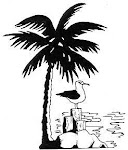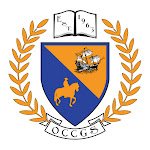This is the only photo I have of the USS Ommaney
Bay CVE-79 burning after it was hit by kamikaze on January 4, 1945. After most
men got off the ship, it buckled, broke in half and sunk. Of the more than 700
men on board, 93 lost their lives, including our Uncle LT. JG. William Marsh.
It would be more than one month before his mother Genevieve Marsh, learned that
her son was missing-in-action.
Friday, September 30, 2016
Thursday, January 22, 2015
Civil War Oddities #128
Builders
of the USS Monitor equipped the first Federal ironclad with a battery of hoses.
They were linked to boilers of the warship, and when a valve was turned,
scalding water was spouted. Members of the crew planned to use their hoses to
repel Confederate boarders, but they soon found that such an attempt would
never be made.
Wednesday, October 22, 2014
Civil War Oddities #127
Federal purchasing agents were gleeful when they managed to buy shipment of big Belgian muskets. Issued without being tested, the pieces that weighed half again as much as the U.S. Model of 1842 proved to have a powerful "kick" When these clumsy pieces were first fired, the weapons ended up knocking so many men down that they soon went into storage.
Tuesday, September 23, 2014
Civil War Oddities #126
Artillery dual at long distance constituted the first battle
of the civil war. Inside Fort Sumter, eighty-five Federals, who were aided by
forty-three civilian workmen, managed to get off numerous shots at
installations manned by more than 6,000 secessionists. During the
thirty-eight-hour exchange of fire from sixty-nine big buns, more than 3,00
shells, some of them hot shot heated in a furnace, were fired. Not a man among
the defenders or attackers was killed.
Wednesday, June 11, 2014
Civil War Oddities #125
An artillery duel at long distance constituted the first
battle of the war. Inside Fort Sumter, eighty-five Federals, who were aided by
forty-three civilian workmen, managed to get off numerous shots at
installations manned by more than 6,000 secessionists. During the
thirty-eight-hour exchange of fire from sixty-nine big guns, more than 3,000
shells, some of them hot shot heated in a furnace, were fired. Not a man among
defenders or attackers was killed.
Wednesday, February 12, 2014
Civil War Oddities #124
While the Forty-second New York Regiment was
encamped at Kalorama Heights, Virginia, Private Tinker captured a pigeon and
made a pet of it. According to the Rebellion Record, the pigeon regularly
followed when men of the Tammany regiment moved to another position.
“Occasionally flying away at a great distance, it always returned and when
weary, would alight on some wagon of the train.
Tinker’s pet reportedly went to Poolesville,
Washington, Fort Monroe, and Yorktown. Staying with the regiment throughout the
bloody days of the Wilderness, the pigeon is also credited with having been at
Antietam and Harpers Ferry.
Wednesday, February 5, 2014
Civil War Oddities #123
In addition to four-legged pets, officers and men
sometimes took a special fancy to feathered creatures.
Men belonging to a unit commanded by Confederate
Brig. General Cobb claimed to have taught a rooster to crow when given a
signal. At Fredericksburg, reported the Savannah Republic, every time Federals launched an advance the rooster
responded to prompting. As a result, “just before our sharp-shooters opened
upon them, the rooster’s clear, shrill clarion rang out on the sulphurous air.
This strange defiance, while it cheered and amused out boys, fell with a
depressing effect upon the ears of the enemy.”
Subscribe to:
Posts (Atom)











